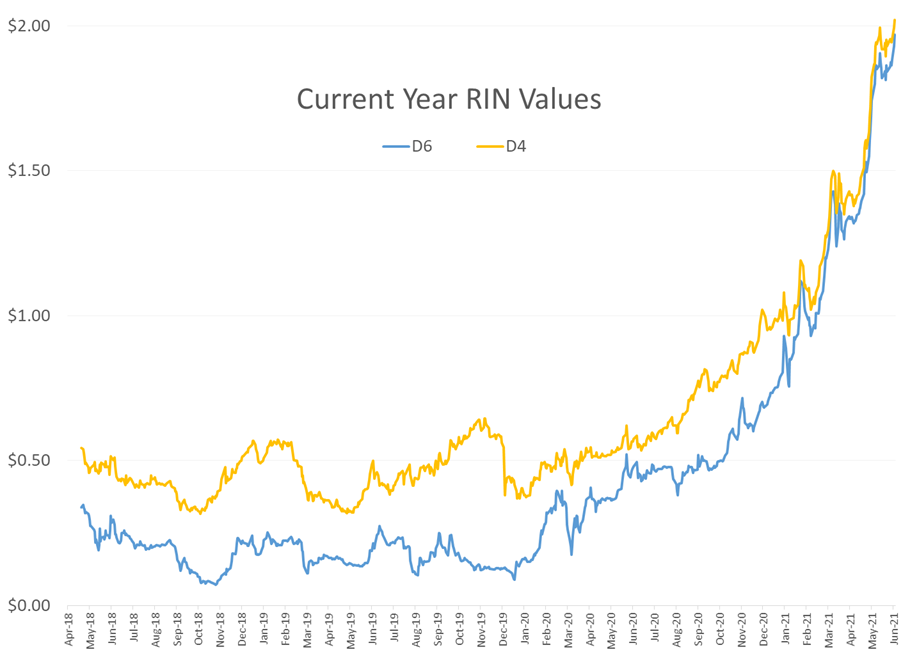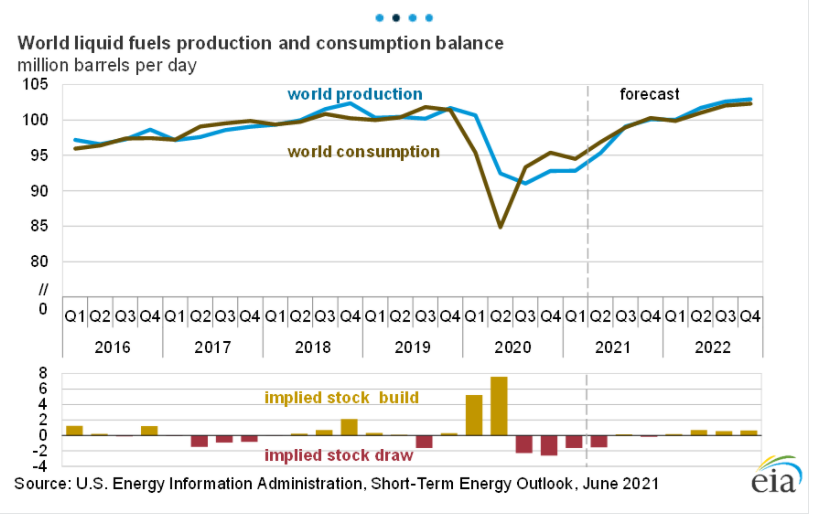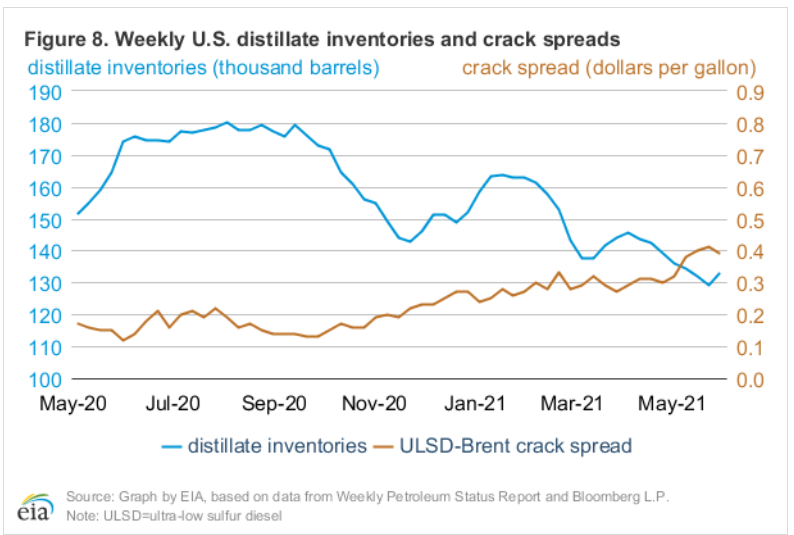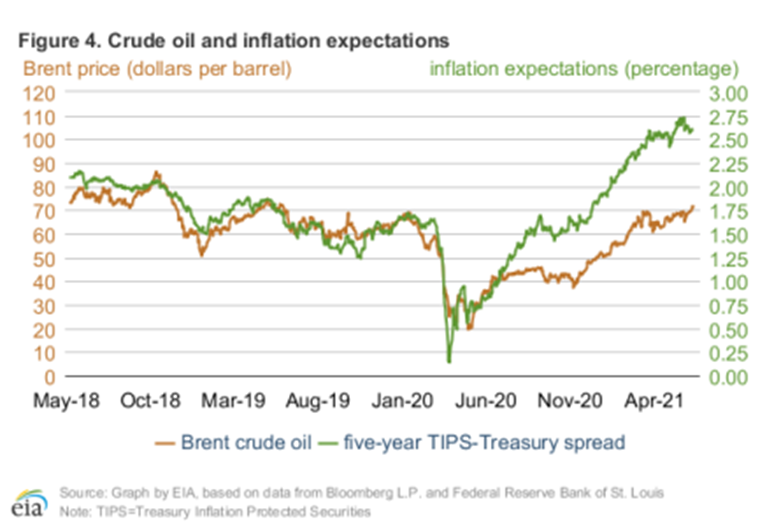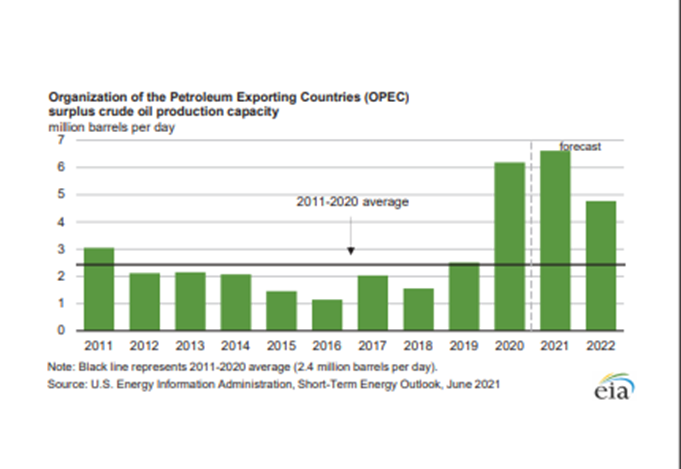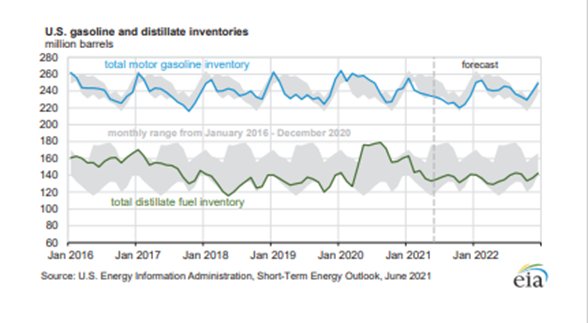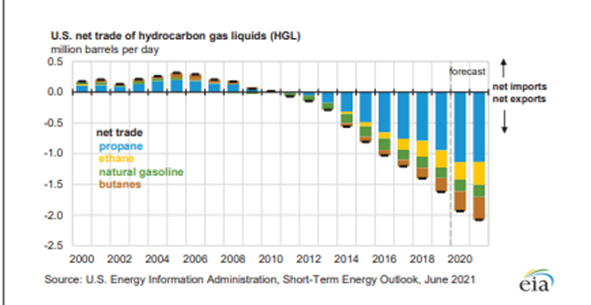Another Day, Another Record Set For RIN Prices

The bulls have regained control of petroleum futures as early losses Tuesday morning turned into solid afternoon gains, and that momentum carried through the overnight session, pushing all of the big 4 contracts to multi-year highs. WTI reached 70.62, and ULSD hit $2.1467, the highest for both contracts since October 2018, while Brent reached $72.83, its highest trade since June 2019. RBOB futures finally joined the rest of the complex, setting a new 3 year high at $2.2356 this morning, a level we haven’t seen since May of 2018.
If these early gains can hold on, the charts favor more upside, that should give WTI a run at the $77 range, which would mean ULSD making a run at $2.30 and RBOB pushing $2.40 in the next several weeks.
The API was said to report a draw in U.S. crude oil stocks of 2.1 million barrels last week, which is getting some of the credit for the rally in WTI this morning. That doesn’t help explain why products are also up however since gasoline stocks increased by 2.4 million barrels and distillates grew by 3.7 million. The EIA’s weekly report is due out at 9:30 central.
Yesterday the DOE released its monthly Short Term Energy Outlook (STEO). The forecasts show increased expectations for U.S. Gasoline demand compared to previous reports, noting that demand before and after the Colonial shutdown has surpassed expectations, but will likely stay below pre-pandemic levels until the end of next year. Diesel meanwhile continues to show demand outstripping supply, causing a sharp drawdown in inventories in the U.S., and leaving the supply chain vulnerable over the coming months. The report also noted that diesel crack spreads have reached their highest levels since December 2019, but failed to mention that renewable volume obligations (RVO) eat up roughly $10/barrel of those gross margins.
Another day, another record set for RIN prices with both D6 and D4 values moving steadily higher even as corn and soybean prices pulled back from recent highs. That increase in RINs pushed the RVO cost for each gallon of gasoline or diesel produced or imported north of 23 cents/gallon. Remember that the next time someone asks you why gasoline prices are suddenly so high.
Around the world and across industries, we’re witnessing the challenges faced by supply chains that are built for extremely large scale and efficiency struggling to meet the rapid pace of demand change. In the refined fuels world, that recovery has been hampered by two of the largest supply shocks ever, February’s Polar Plunge that disrupted just about every refinery in PADD 3 and the Colonial Pipeline hack that took half of the East Coast’s supply offline for a week. While things have calmed down considerably over the past several weeks, the fallout from both events is still being felt. Several refineries continue to struggle to bring units back online that were damaged in the freeze, and the FMCSA extended HOS waivers again for truckers are suppliers still struggle to catch up even though Colonial has been fully operational for three weeks.
Click here to download a PDF of today's TACenergy Market Talk.
Latest Posts
Crude Oil Inventories Climbed Above Year-Ago Levels For The First Time In 2024
Week 17 - US DOE Inventory Recap
The Energy Complex Is Trading Modestly Lower So Far This Morning With WTI Crude Oil Futures Leading The Way
Energy Futures Are Drifting Quietly Higher This Morning
Social Media
News & Views
View All
Crude Oil Inventories Climbed Above Year-Ago Levels For The First Time In 2024
Sell by May then go away.
The old trading adage looked good for energy markets in 2024 as the new month started off with the biggest daily sell-off of the year so far. WTI and ULSD contracts are now in “rally or else” mode on the charts with sharply lower prices a strong possibility now that technical support layers have broken down. RBOB doesn’t look quite as bearish on the charts, but seasonal factors will now act as a headwind as we’re well into the spring peaking window for gasoline prices, and we’ve already seen a 27 cent drop from the highs. If RBOB can hold above $2.50 there’s a chance to avoid a larger selloff, but if not, a run towards $2.20 for both gasoline and diesel looks likely in the months ahead.
The selling picked up steam following the DOE’s weekly report Wednesday, even though the inventory changes were fairly small. Crude oil inventories continue their steady build and climbed above year-ago levels for the first time in 2024. Demand for refined products remains sluggish, even after accounting for the RD consumption that’s still not in the weekly reports, and most PADDs are following a typical seasonal inventory trend. The Gulf Coast saw a healthy build in diesel inventories last week as the export market slowed for a 3rd straight week. Refinery runs dipped modestly last week following a handful of upsets across the country, but overall rates remain near normal levels for this time of year.
The Transmountain pipeline expansion began operations yesterday, completing a 12-year saga that has the potential to materially change refining economics for plants in the US that relied heavily on discounted Canadian crude to turn profits over the past decade.
The P66 Borger refinery reported another operational upset Monday that lasted a full 24 hours impacting a sulfur recovery unit. Last week the company highlighted how the plant’s fire department helped the surrounding area when the largest wildfire in state history came within feet of the facility.
The EPA approved a new model to determine life cycle carbon intensity scores this week, which cracks open the door for things like ethanol to SAF, which were previously deemed to not reduce emissions enough to qualify for government subsidies. The new model would require improved farming techniques like no-till, cover crop planting and using higher efficiency nitrogen fertilizer to limit the damage done by farms that no longer rotate crops due to the ethanol mandates. Whether or not the theoretical ability to produce SAF comes to fruition in the coming years thanks to the increased tax credit potential will be a key pivot point for some markets that find themselves with too much RD today, but could see those supplies transition to aviation demand.
The FED continues to throw cold water on anyone hoping for a near term cut in interest rates. The FOMC held rates steady as expected Wednesday, but also highlighted the struggles with stubbornly high inflation. The CME’s Fedwatch tool gave 58% odds of at least one rate cut by September before the announcement, and those odds have slipped modestly to 54% this morning.

Week 17 - US DOE Inventory Recap

The Energy Complex Is Trading Modestly Lower So Far This Morning With WTI Crude Oil Futures Leading The Way
The energy complex is trading modestly lower so far this morning with WTI crude oil futures leading the way, exchanging hands $1.50 per barrel lower (-1.9%) than Tuesday’s settlement price. Gasoline and diesel futures are following suit, dropping .0390 and .0280 per gallon, respectively.
A surprise crude oil build (one that doesn’t include any changes to the SPR) as reported by the American Petroleum Institute late Tuesday is taking credit for the bearish trading seen this morning. The Institute estimated an increase in crude inventories of ~5 million barrels and drop in both refined product stocks of 1.5-2.2 million barrels for the week ending April 26. The Department of Energy’s official report is due out at it’s regular time (9:30 CDT) this morning.
The Senate Budget Committee is scheduled to hold a hearing at 9:00 AM EST this morning regarding a years-long probe into climate change messaging from big oil companies. Following a 3-year investigation, Senate and House Democrats released their final report yesterday alleging major oil companies have internally recognized the impacts of fossil fuels on the climate since as far back as the 1960s, while privately lobbying against climate legislation and publicly presenting a narrative that undermines a connection between the two. Whether this will have a tangible effect on policy or is just the latest announcement in an election-yeardeluge is yet to be seen.
Speaking of deluge, another drone attack was launched against Russian infrastructure earlier this morning, causing an explosion and subsequent fire at Rosneft’s Ryazan refinery. While likely a response to the five killed from Russian missile strikes in Odesa and Kharkiv, Kyiv has yet to officially claim responsibility for the attack that successfully struck state infrastructure just 130 miles from Moscow.
The crude oil bears are on a tear this past week, blowing past WTI’s 5 and 10 day moving averages on Monday and opening below it’s 50-day MA this morning. The $80 level is likely a key resistance level, below which the path is open for the American oil benchmark to drop to the $75 level in short order.
Click here to download a PDF of today's TACenergy Market Talk.
